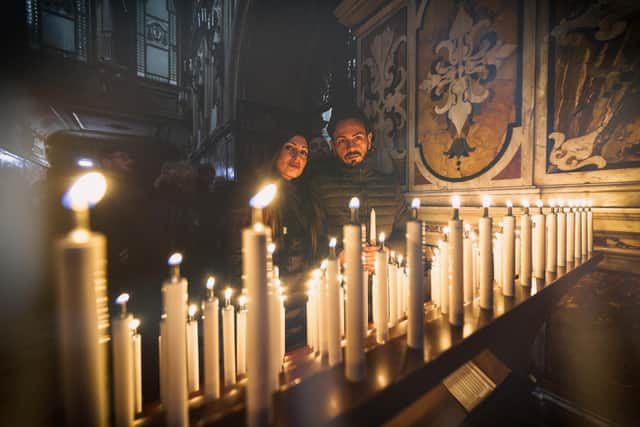Candlemas 2021: when is the Christian festival, what does it celebrate, and should I leave my Christmas decorations up until then?
The tree is down and you no longer hear Mariah Carey’s ‘All I Want for Christmas is You’ every time you visit the supermarket, so you may have thought the festivities were over.
However, the story of Christ only begins on Christmas Day, so there are still more Christian celebrations in the calendar.
Advertisement
Hide AdAdvertisement
Hide AdThat’s right, the candle hasn't gone out on Christmas cheer - in fact, it will be reignited on 2 February for Candlemas.


What is the origin of candles as a religious symbol?
Candles and Candlemas may date back to pagan times - much like many other traditions now adopted into the Christian faith.
Pagans used to light candles on the day between the winter and spring equinox (the beginning of Spring), as a Festival of Light.
Some believed that the weather on this day would determine the weather for the rest of the winter - some may know the traditional rhyme:
“If Candlemas Day be fair and bright
Winter will have another fight.
If Candlemas Day brings cloud and rain,
Winter won't come again.”
Superstitions included theories that a candle dripping on one side as it enters the church on Candlemas could indicate a death of a family member in the year ahead.
Snowdrops brought into the house on Candlemas were also thought to serve as a warning of a parting of relationships in the near future.
Why do Christians celebrate Candlemas?
Candlemas is the celebration of the purification of the Virgin Mary 40 days after she gave birth to the immaculate conception, Jesus Christ.
It is also an acknowledgment of the day Jesus was presented to God at the Temple of Jerusalem.
Advertisement
Hide AdAdvertisement
Hide AdIn The Gospel of Luke, it is told how Jesus was brought to the Temple by his mother 40 days after he was born.
Here, they were met by Anna and Simeon. Simeon lifted Jesus up and called him the Light to The World.
Simon was meant to be the God-receiver, while Anna has become known as a prophetess.
The purification of Mary also took place this day. Purification is an old Jewish tradition stemming back to a time when women were considered ‘unclean’ after the birth of their child.
For 40 days after the birth of a boy and 60 after a girl, a mother was not allowed to enter the temple and could not worship. Following this period, a purification would take place and she would be entitled to worship again.
How do Christians celebrate?
The Christian church adopted this day, following the purification of the Virgin Mary, to bless all of the candles and so now people tend to also light candles on February 2.
Anglicans, Methodists, Lutherans, Orthodox and Roman Catholics will often bring candles to their local parish church on this day and these will be used for the rest of the year.
For some Christians, Christmas decorations will be brought down around the 12th day of Christmas on January 5 or 6, while others will leave them up until Candlemas.
Advertisement
Hide AdAdvertisement
Hide AdIf decorations are not brought down by the 12th day of Christmas y - the day believed to be when the wise men brought presents to baby Jesus - they should remain up until 2 February according to tradition.
Will celebrations go ahead in 2021?
As places of worship will now be closed for individual and group prayer in February 2021 due to the national lockdown,Christians are more likely to acknowledge the feast day by placing lit candles in the windows of their homes.